I usually make this classic beef stew recipe over several hours, but in this blog I’ll share a secret to making an excellent beef stew in half the time… AND, I’ll share five things to avoid when making beef stew.
Generally I’m not a fan of shortcuts, but this is one that definitely won’t disappoint. I’m excited to share it because even the busiest families deserve some homemade beef stew, right?
After all, not much remedies a cold winter day like a hearty bowl of beef stew. I like to smoke a chuck roast before putting it in the stew for an added layer of flavor that just puts it over the top.
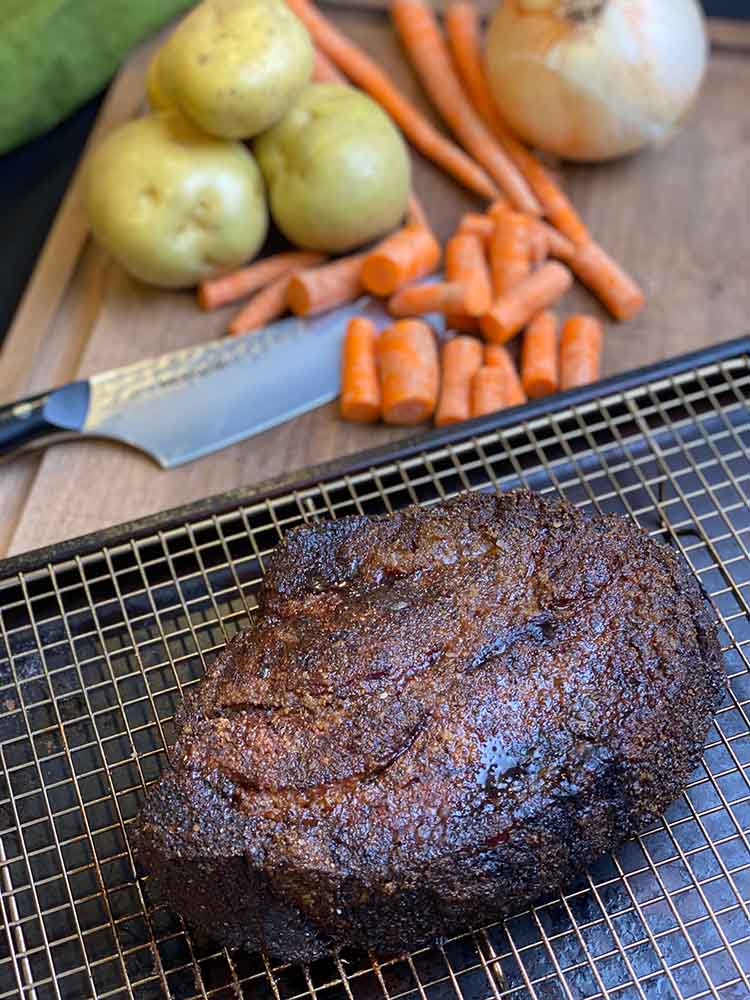
If you don’t have a grill or smoker, browning the beef first in a Dutch oven is a great way to build layers of flavor. After the beef is browned, don’t forget to scrape up those browned bits in the bottom of the pan.
Don’t have a Dutch oven? No problem. A slow cooker works well for this stew. Just brown the meat in a cast iron pan before transferring it to the slow cooker. Doesn’t get much easier than that; comfort food should be simple, right?
Speaking of comfort, the complex aromas of the veggies, beef stock, and wine will permeate the kitchen as it simmers. If that’s not comfort, I don’t know what is.
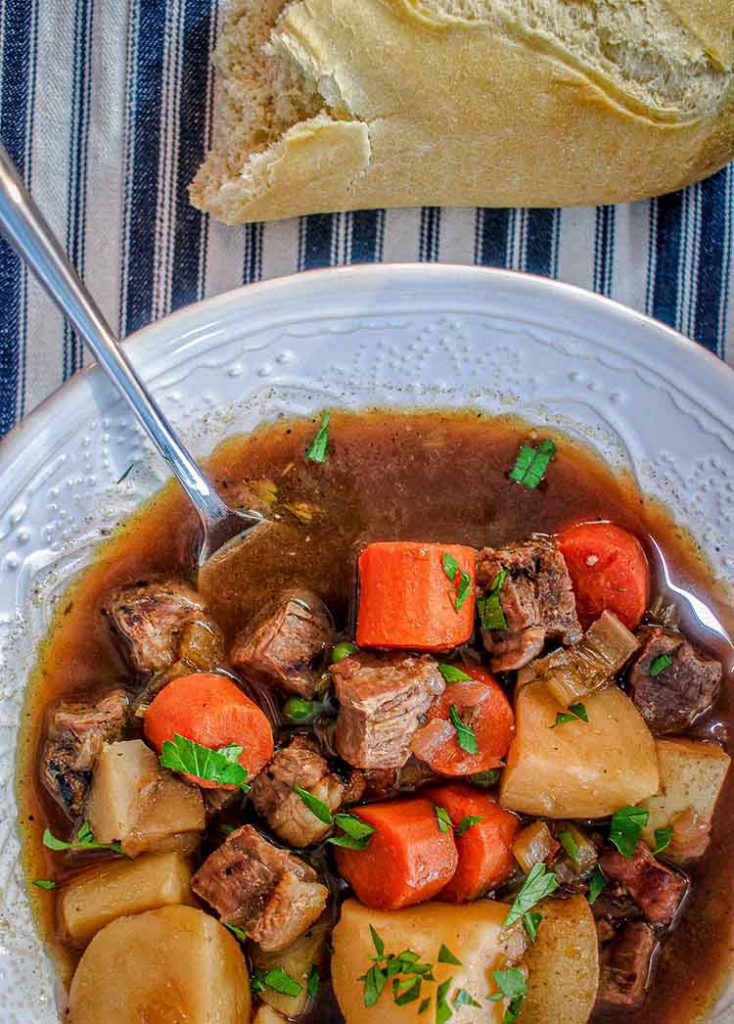
What Is the Best Meat for Beef Stew?
Traditionally, beef chuck roast is used for beef stew. It’s inexpensive, and it packs a bold flavor. But because it can be tough, it requires a decent amount of cooking time to get it tender.
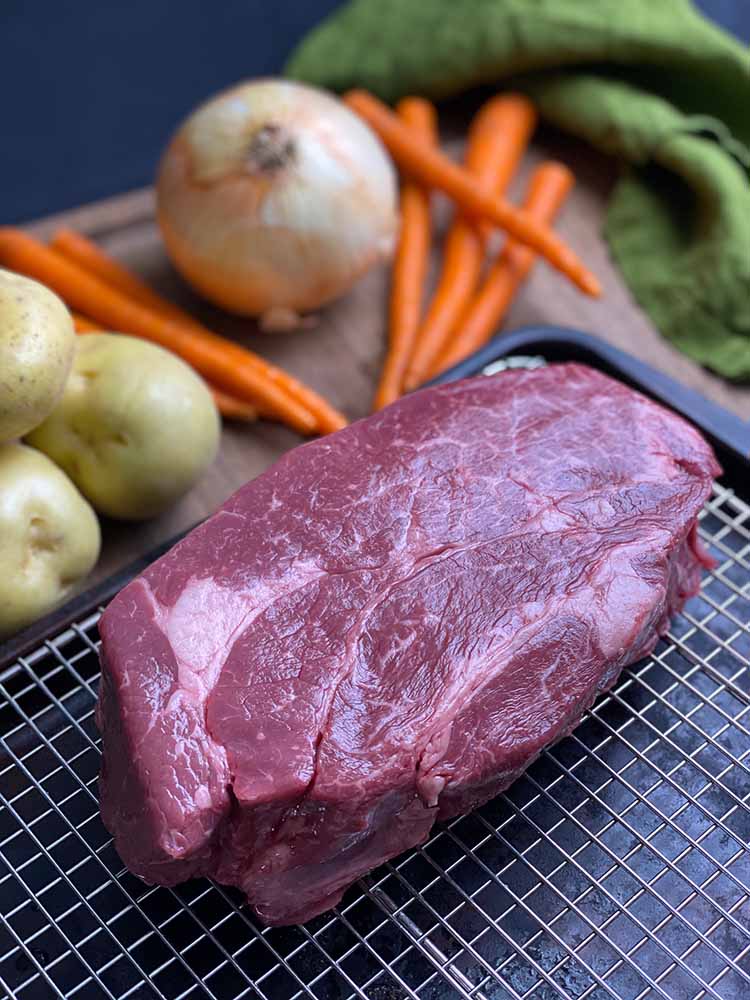
That’s where the majority of time is spent on beef stew. Getting the tough stew meat tender can take several hours. So what’s the secret to quick beef stew? Hold on, I’m getting there!
If you have access to venison, that’s another excellent choice for this stew. That’s what I grew up eating, with potatoes and carrots that were harvested from our garden in the summer.
Other great choices for stew meats are short ribs and oxtails. Great flavors but more expensive than a good old-fashioned chuck roast.
How Do You Make Beef Stew Tender?
Time. Simply put, you need time. Tenderizing tough cuts of meat takes time at temperature to break down the connective tissue that makes for the tough mouth feel.
It’s the same reason a pork shoulder is considered done at around 205 °F, but it takes 12 plus hours to get tender. I could get a pork shoulder to 205 °F in an hour, but it would still be tough. Remember, it takes time to break down the connective tissue.
Time OR pressure. If you have a pressure cooker, you can speed the process along for sure, but most of us don’t have one of those fancy cookers.
What Are the Best Potatoes for Stew?
I stick with potatoes that are high in moisture and low in starch. The Yukon Gold for example, is a great potato for stew as it holds up well. It’s also fun to mix it up a bit and throw in some baby red potatoes or fingerling potatoes.
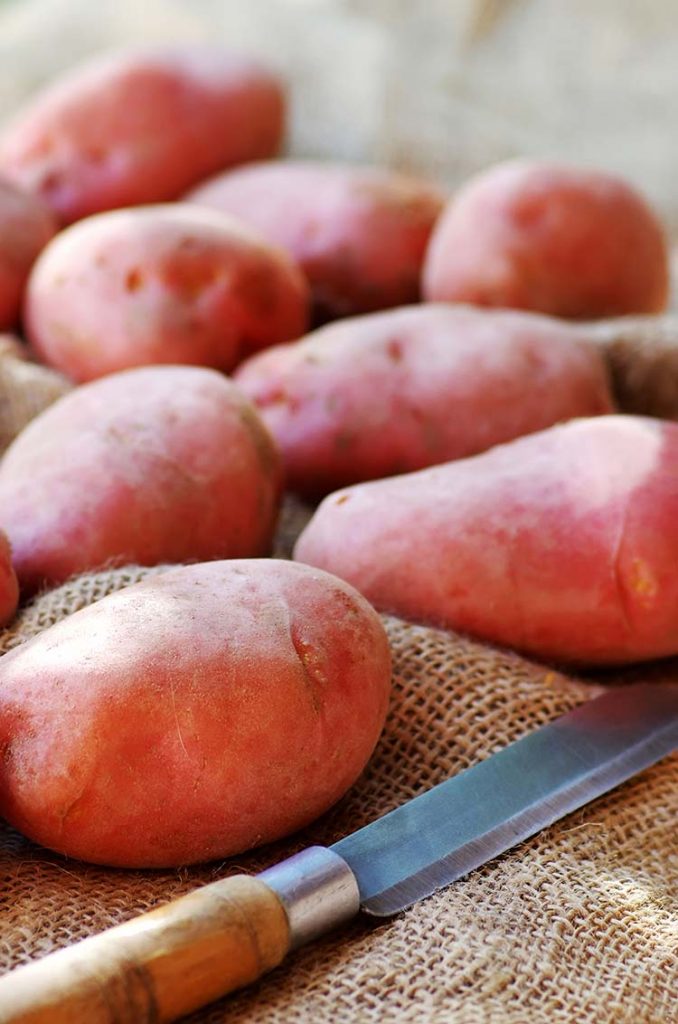
You’ll notice a common trait among these potatoes: a thin skin. Unlike the russet potato, which isn’t great for stew and has a thicker skin. Russets also have a low moisture content so they tend to suck up the stew and fall to pieces.
The Five Most Common Beef Stew Mistakes
- Starting with the wrong meat. I’ve talked about what cuts I think are best, but there are some you should avoid. Specifically beef that’s super lean, like the eye of round steak, for example. While the eye of round is terrific for thinly sliced roast beef, it’s much too lean for beef stew.
- Not searing the beef before braising it. The Maillard reaction does some beautiful things to beef, take advantage of those. And it’s also responsible for my later tip on saving time making beef stew.
- Braising too long, or not long enough. You want the meat to be super tender, but not mushy. Not braising the beef long enough will result in tough meat, too long and you’ll have pâté.
- Using plain water to make the broth. While the beef will flavor the water, you need to use beef stock at a minimum; homemade if possible. On top of that, don’t leave out the wine! Wine brings an added level of complexity to the stew that you won’t get without it. Don’t worry, the alcohol will cook out so it’s completely kid safe.
- Adding the vegetables too soon. Carrots and potatoes cook at different rates, potatoes cooking faster. Take that into account when adding them to the stew.
How To Make Beef Stew in Half The Time
I know I’ve mentioned this a few times, so here goes. The majority of the time to make stew is spent, as I’ve said, getting the beef tender. So how do you get around that?
Repurpose! AKA, use leftovers! Seriously, think about this. How often have your eyes been bigger than your stomach when picking out that giant ribeye or porterhouse steak?
Sure you can save it for the next day but let’s be honest… reheated steak is just not great. That’s because reheating steak almost always results in overcooking it.
So, cut that leftover ribeye, strip steak, or whatever you have into chunks and use it in beef stew. It provides excellent flavor because it’s already been seared and seasoned.
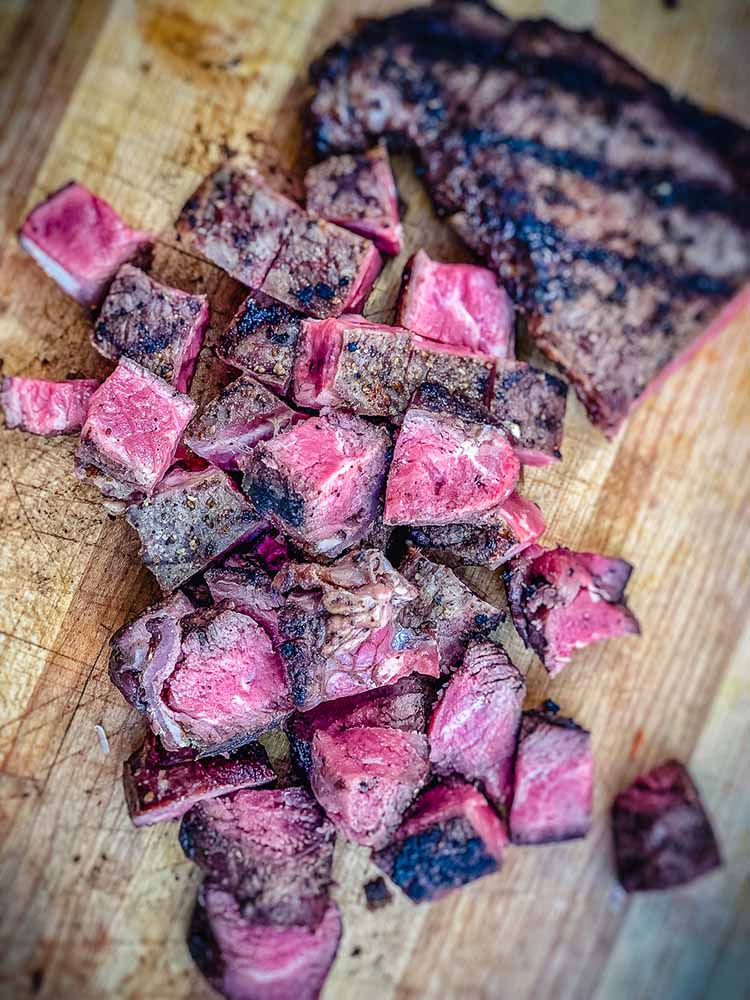
It cuts down on the cooking time by more than half, and avoids wasting that expensive steak by turning it into grey matter when reheating it.
Note: The instructions below are written based on the use of leftover steak. If you’re starting with a standard chuck roast, the order in which you add the vegetables would change:
First, sauté the chopped onions in oil for 5 minutes. Then stir in three cups of cubed chuck roast meat and braise until the meat is brown, about 5-7 minutes. Next add the other vegetables, broth, wine and seasoning to the pot. Bring it to a boil, simmer and cover and cook for about 3 hours or until meat is tender. As I mention above, you can use either a Dutch oven or a slow cooker, but either way, it takes you longer than with my tip to use leftover steak.
Classic Beef Stew Recipe
Serves: 8-10 | Prep time: 15 minutes |Cook time: 2 hours
Ingredients
1 stick unsalted butter
4 large carrots, roughly chopped
5 stalks celery, medium chopped
1 medium Vidalia onion, medium chopped
1 tsp salt
1 tsp pepper
1 cup red wine (port is best, but any red wine will work)
48 oz. beef stock
1 can cream of mushroom soup
1 package onion soup mix
2 bay leaves
2 tbsp cornstarch mixed with equal parts water to make a slurry
5 small Yukon Gold potatoes, cut into 1/2″ cubes
3 cups cold leftover steak, cubed (I use whatever steak I have left over)
1 loaf of French bread
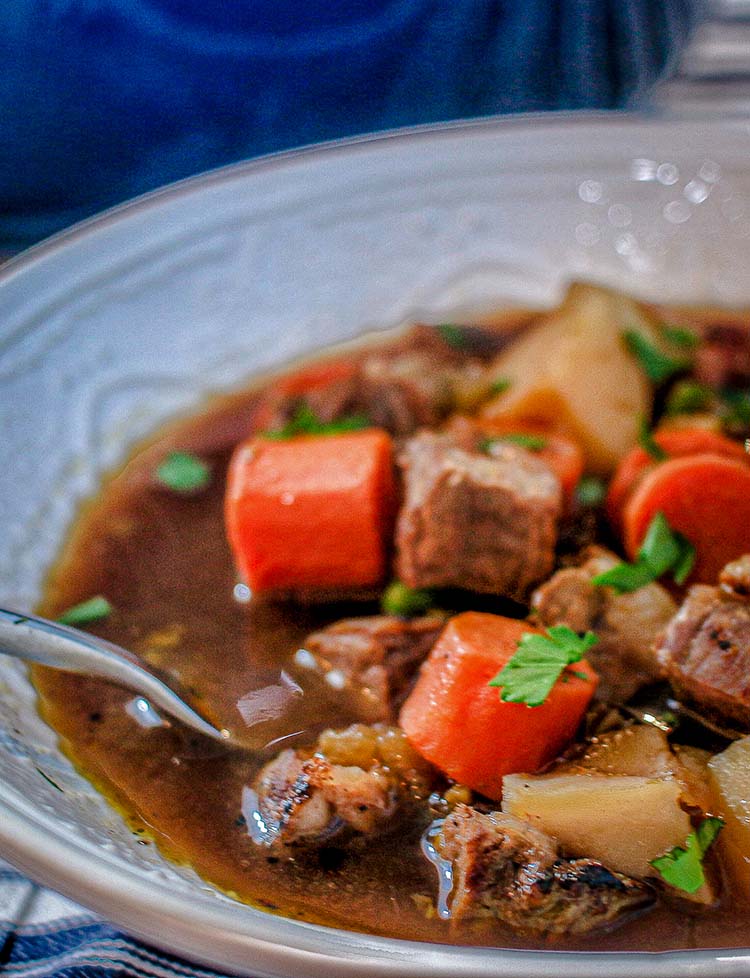
How To Make Classic Beef Stew
Step 1: In a large Dutch oven, melt the butter over medium high heat. Add the onions, carrots, and celery. Season with salt and pepper and sauté for 10 minutes.
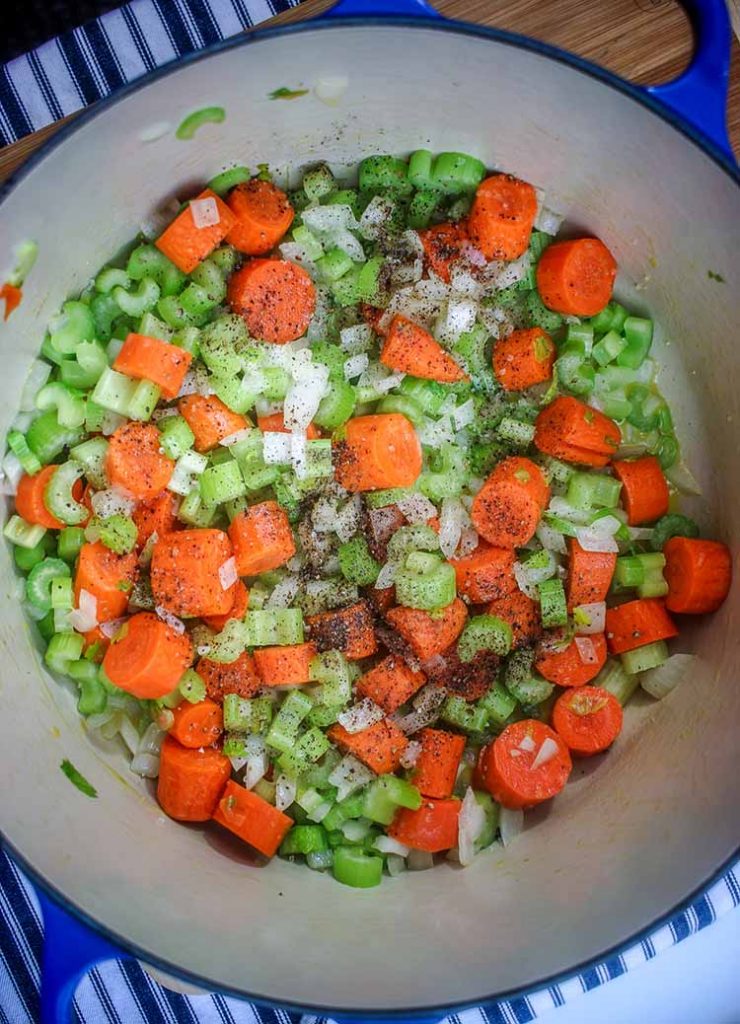
Step 2: Add red wine and bring to a boil. Then reduce heat to low allowing the wine to reduce for 10 minutes, uncovered.
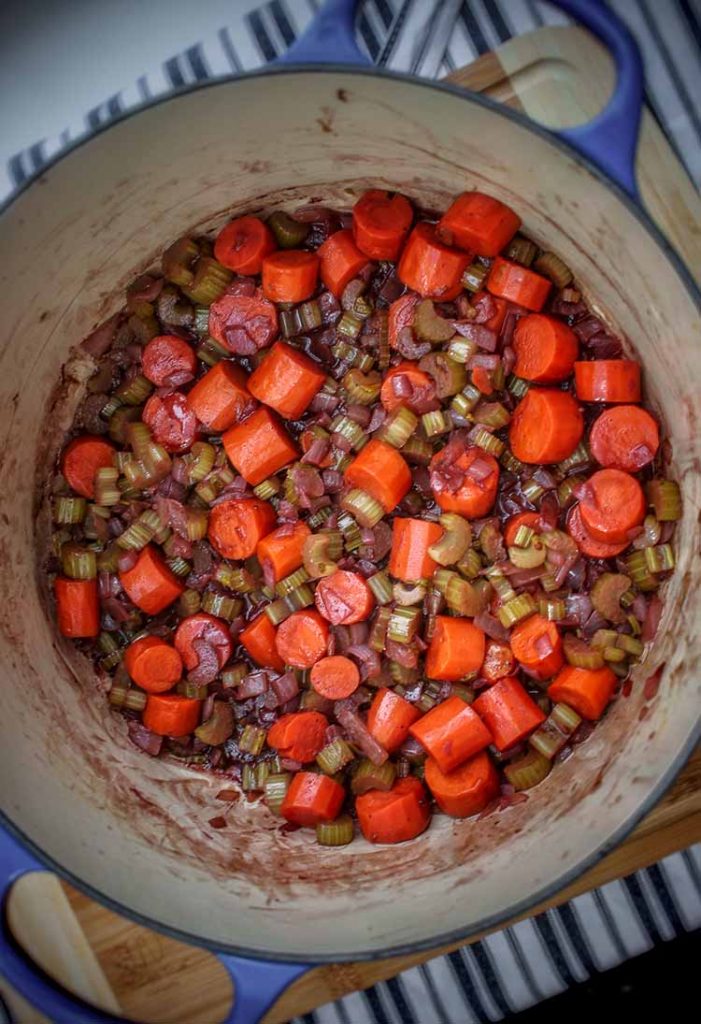
TIP: Cheap wine is fine here. Cooking with cheap bourbon, on the other hand, tastes like you cooked with cheap bourbon.
Step 3: Add the beef stock, cream of mushroom soup, onion soup mix, and bay leaves. Bring to a simmer. Cover the stew and let it simmer over low heat for one hour.
Step 4: Slowly whisk the cornstarch slurry into the broth to thicken.
Step 5: Add the potatoes and simmer for 35 minutes. Then add the steak and simmer for an additional ten minutes.
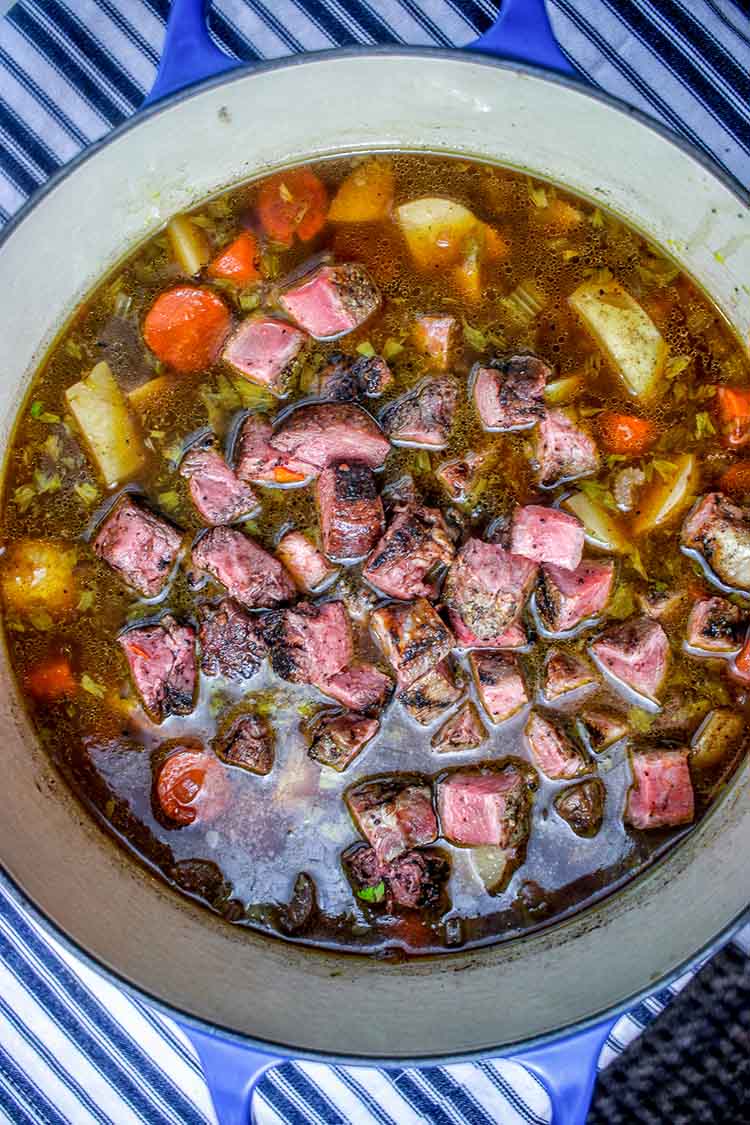
Step 6: Serve hot with crusty French bread.
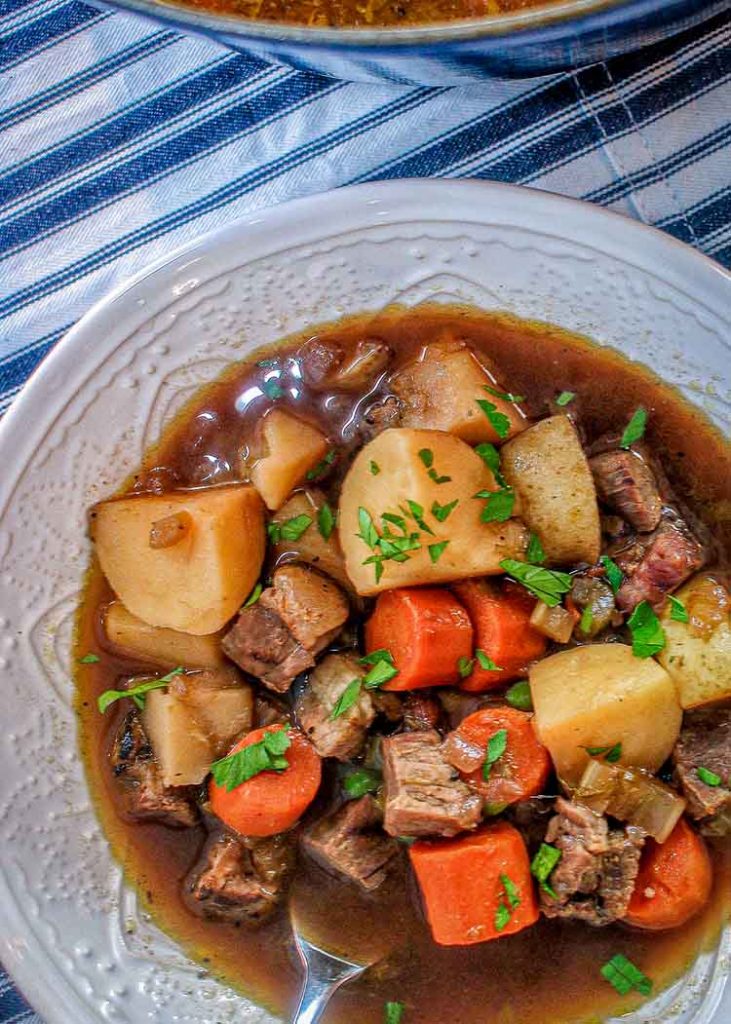
For Other Great Comfort Foods, Check Out:
Smoked Meatloaf
The Perfect Grilled Cheese
Garlic Mashed Potatoes

Ingredients
- 1 stick unsalted butter
- 4 large carrots roughly chopped
- 5 stalks celery medium chopped
- 1 medium Vidalia onion medium chopped
- 1 tsp salt
- 1 tsp pepper
- 1 cup red wine (port is best, but any red wine will work)
- 48 oz. beef stock
- 1 can cream of mushroom soup
- 1 package onion soup mix
- 2 bay leaves
- 2 tbsp cornstarch mixed with equal parts water to make a slurry
- 5 small Yukon Gold potatoes cut into 1/2″ cubes
- 3 cups cold leftover steak cubed (I use whatever steak I have left over)
- 1 loaf of French bread
Instructions
- In a large Dutch oven, melt the butter over medium high heat. Add the onions, carrots, and celery. Season with salt and pepper and sauté for 10 minutes.
- Add red wine and bring to a boil. Then reduce heat to low allowing the wine to reduce for 10 minutes, uncovered.
- Add the beef stock, cream of mushroom soup, onion soup mix, and bay leaves. Bring to a simmer. Cover the stew and let it simmer over low heat for one hour.
- Slowly whisk the cornstarch slurry into the broth to thicken.
- Add the potatoes and simmer for 35 minutes. Then add the steak and simmer for an additional ten minutes.
- Serve hot with crusty French bread.


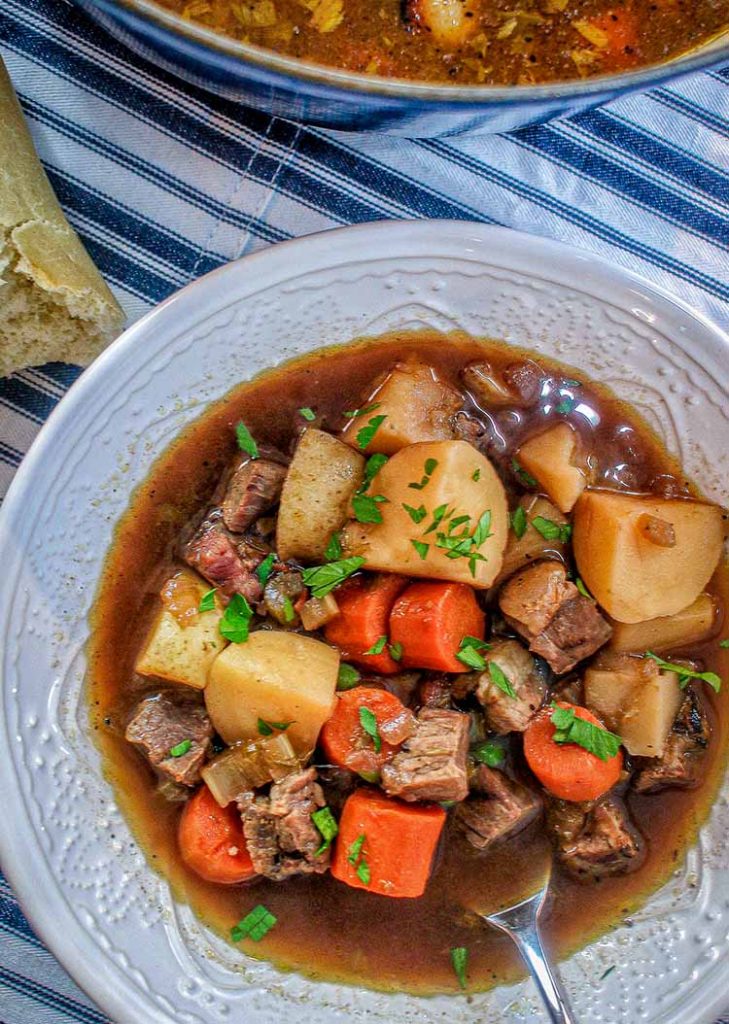
What’s a good substitute for port?
Thanks for checking it out Natalie. You could also use Cab Sauv or Merlot, but port (nothing expensive) is really what I prefer.
-M